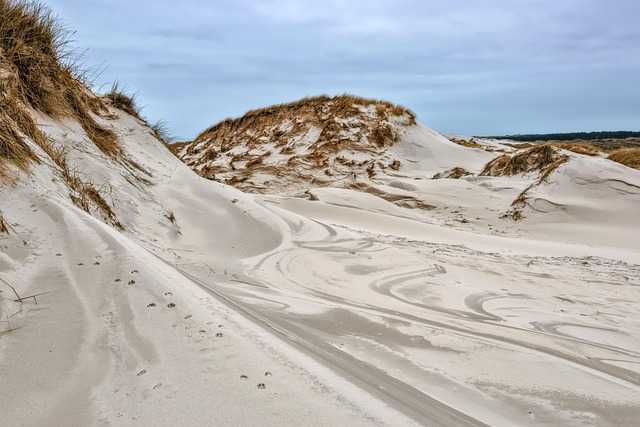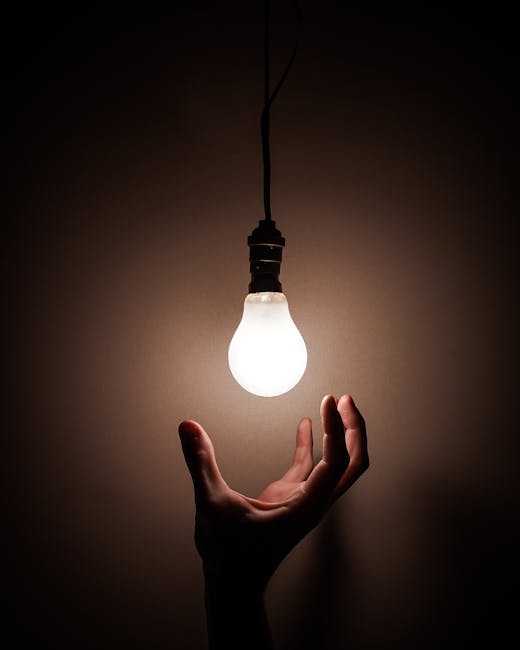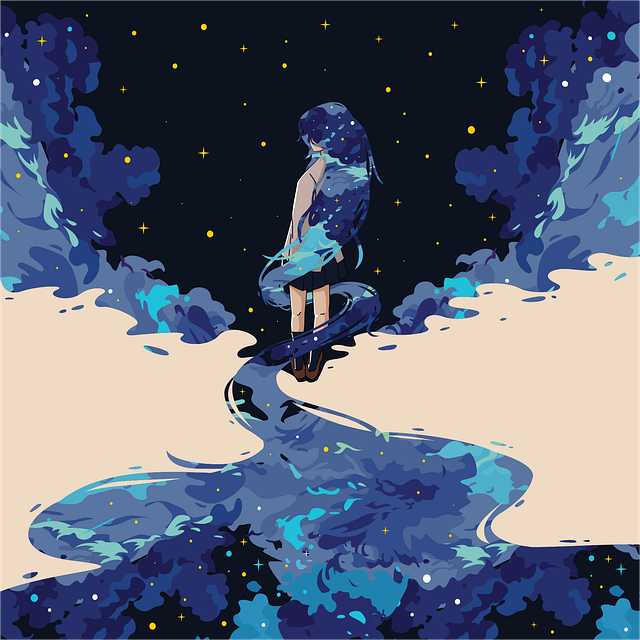Table of Contents
- Exploring the Beauty of Natural Landscapes in Drawings
- Techniques to Capture the Essence of Flora and Fauna
- Inspiration from Nature: How to Find Your Artistic Voice
- Choosing the Right Tools for Nature Drawing Success
- Q&A
- in summary


Exploring the Beauty of Natural landscapes in Drawings
The allure of nature has inspired artists for centuries,and the beauty captured in drawings showcases landscapes that evoke a sense of wonder and tranquility. From the rolling hills to the majestic mountains, these artistic interpretations often enhance our appreciation for the natural world. As artists translate their experiences and visions onto paper, they create visual narratives that resonate with viewers, beckoning them to explore the scenic marvels depicted in each piece.
When looking at drawings of nature, several elements stand out that highlight the artist’s viewpoint and evoke emotion. Some common themes in these artworks include:
- color Palette: The choice of colors vividly illustrates diffrent times of the day, seasons, and moods.
- Texture: Techniques used to mimic natural elements, such as water or foliage, bring the drawings to life.
- Composition: The arrangement of natural elements guides the viewer’s eye and emphasizes the vastness of the landscape.
Many artists employ various techniques to convey the essence of their surroundings, such as watercolor washes, charcoal shading, and graphite detailing. Each method contributes to the overall atmosphere of the piece, playing with light and shadow to create depth. The subtle shifts in hue and tone can transport viewers to serene lakesides, sun-kissed meadows, or snow-draped mountains. This engagement forces one to reflect on their own relationships with nature and the peace it imparts.
| Drawing Technique | Description | Ideal Landscapes |
|---|---|---|
| Watercolor | Soft blending of colors. | Lush forests, serene lakes. |
| Charcoal | Bold contrasts and textures. | mountains, stormy skies. |
| Ink | Precision and detail. | Desert landscapes, intricate foliage. |
Techniques to Capture the Essence of Flora and Fauna
To encapsulate the intricacies of plants and animals in your drawings, it’s essential to engage with them intimately. Observational sketches serve as a powerful tool for artists, allowing you to capture life’s subtleties. Spend time outdoors to study the delicate veins of a leaf or the contours of an animal’s silhouette. This close relationship not only aids in understanding anatomy but also enriches your portrayal, providing depth and authenticity.
Another effective technique is employing natural light. The way sunlight filters through foliage or glimmers off animal fur adds a three-dimensional quality to your artwork. Experiment with different times of day to see how shadows shift and colors change.This experimentation can lead to unexpected discoveries that enhance your drawings. Use highlights and shadows strategically to create contrast and make your subjects pop.
Incorporating textures and patterns is vital when representing flora and fauna. Use varied materials, like pencil, charcoal, or pastels, to convey the roughness of bark or the softness of fur. Pay attention to natural patterns, such as the spirals of a shell or the symmetry of petals.Creating texture not only draws the eye but also invites the viewer to ‘feel’ the nature you’ve brought to life on your canvas.
consider the interplay between composition and context. Capturing flora and fauna isn’t solely about individual subjects; it’s about their environment. Place your subjects within their ecosystems to tell a story. Use elements like branches, water, or grass to frame your subjects. This approach can help illustrate the relationship between different species and their habitats, offering depth to your creations.


Inspiration from Nature: How to Find Your Artistic Voice
Nature is an endless source of inspiration for artists, providing a vast palette of colors, textures, and forms that can spark creativity and help you discover your unique artistic voice. By immersing yourself in the natural world, you can observe the intricate details of leaves, the movement of water, and the soft glow of sunlight filtering through trees. These moments can serve as crucial touchstones for your work, guiding your hand as you translate what you see into your art.
To effectively draw inspiration from the environment around you, consider the following:
- Observation: Spend time in different natural settings-forests, rivers, beaches, and mountains. Take notes or sketches of what captures your attention.
- Photography: Use photography to document the beauty and diversity of nature. It can serve as a reference for your drawings and help you notice details you might miss in real-time.
- color Studies: Pay attention to the various colors in nature. Create small studies to understand how they change with the light and season.
Engaging with nature also allows for moments of reflection. The stillness of a forest or the rhythmic sound of waves can stimulate thoght processes, encouraging you to connect with your inner self and articulate your feelings through art. Allow these experiences to melt into your creative practice, influencing the mood and tone of your creations. Experiment with textures, patterns, and compositions inspired by nature’s designs, bringing a sense of authenticity to your artistic expression.
Sometimes, collaboration with nature can ignite your creativity. Consider creating a dedicated sketchbook where you combine your drawings with elements from the environment, such as pressed leaves or painted stones. This fusion of natural artifacts with your artistic voice allows you to enhance your creations further. Here’s a simple table to illustrate some ideas for interacting with nature:
| Activity | Purpose | Outcome |
|---|---|---|
| Nature walks | Observation and inspiration | Sketch ideas |
| Photography | Documentation of colors and forms | Reference material |
| Field studies | Understanding textures and patterns | Texture collage |


Choosing the Right Tools for Nature Drawing Success
When embarking on your journey into the world of nature drawing, selecting the right tools can greatly enhance your artistic experience and outcomes. Graphite pencils are often favored for their versatility, allowing for precise details and a range of shading techniques. Consider investing in a set of high-quality pencils ranging from hard (H) for fine lines to soft (B) for richer, darker strokes. similarly, charcoal can be a valuable addition, providing bold contrasts and expressive textures that are especially effective for capturing the drama of natural landscapes.
Alongside your customary drawing utensils, you might explore colored pencils or pastels. These mediums offer an opportunity to bring vibrant life to your creations, mimicking the vivid colors found in nature. A selection of these supplies can allow for an array of blending effects, making your foliage and wildlife illustrations pop with realism. When choosing colors, opt for earthy tones alongside luminous colors to accurately depict different environments, whether you’re drawing lush forests or barren deserts.
Paper choice matters just as much as the tools themselves. Look for sketchbooks with heavyweight, textured paper that can withstand various mediums without tearing or buckling.Options like cold press watercolor paper are excellent for those who wish to incorporate light washes or layers. It’s best to select acid-free paper to ensure your artwork lasts without yellowing over time.Additionally, keep in mind that the size of your paper can impact the detail and scale of your work; a larger format can be beneficial for capturing sweeping landscapes.
To help organize your supplies and streamline your drawing sessions, consider using a portable drawing kit or a fashionable artist’s tote. A well-structured kit can keep your tools handy and protected, ensuring you’re always ready to draw on-site. Below is a quick guide to some essential items you may want to include in your drawing kit:
| Tool | Purpose |
|---|---|
| Graphite Pencils | Diverse shading and detailing |
| Charcoal Sticks | Bold lines and rich contrasts |
| Colored Pencils | Vivid colors for lifelike illustrations |
| Blending Stumps | Seamless transitions in shading |
| Portable Easel | Stable support while outdoors |
Q&A
Q&A: Exploring the World of Nature Drawings
Q1: What are nature drawings, and what distinguishes them from other forms of art?
A1: Nature drawings are artistic representations of the natural world, capturing everything from intricate plant life and majestic landscapes to the delicate fauna that inhabit our environment. What sets them apart from other forms of art is their focus on realism and detail, frequently enough aiming to highlight the beauty and complexities of nature rather than imaginative interpretations.
Q2: What materials are commonly used in creating nature drawings?
A2: Artists often employ a variety of materials when creating nature drawings, depending on their style and preference. Common options include graphite pencils for fine details, charcoal for rich, dramatic contrasts, and colored pencils or pastels for vibrant hues. Many artists also use watercolor or ink to add depth and texture to their work.
Q3: How can someone get started with drawing nature?
A3: To begin drawing nature, start by observing your surroundings. Spend time outdoors, sketching simple objects like leaves, flowers, or trees. Invest in a sketchbook and practice regularly, focusing on capturing shapes, shadows, and textures. Consider taking a class or following online tutorials to refine your techniques and learn about different drawing styles.
Q4: What are the benefits of drawing nature?
A4: Drawing nature offers numerous benefits, including enhanced observational skills and a deeper appreciation for the environment. Engaging with nature through art can also promote relaxation and mindfulness, serving as a therapeutic outlet. Additionally, it encourages creativity and can foster a sense of connection to the natural world.
Q5: Are there particular techniques that artists use to improve their nature drawings?
A5: Yes! Many artists use techniques such as contour drawing to get the outlines right and shading to add dimension. The use of hatching and cross-hatching can create texture and depth, while studying the principles of light and shadow is crucial for realistic representations. Regular practice and experimentation with different styles will also help improve overall technique.
Q6: How do contemporary artists approach nature in their work?
A6: Contemporary artists may take various approaches to nature in their drawings, often incorporating mixed media, abstract elements, or environmental themes.Some focus on the impact of humanity on nature,using their art to comment on ecological issues,while others celebrate the beauty and serenity of the natural world,often blending traditional methods with modern innovation.
Q7: Where can I find inspiration for my nature drawings?
A7: Inspiration for nature drawings can come from a multitude of sources. Nature itself is the most obvious place-parks, gardens, and hiking trails offer infinite subjects. Online platforms such as Pinterest and Instagram showcase artwork and the experiences of fellow artists. Nature documentaries,books about flora and fauna,or even photography can ignite your creativity and inform your artistic choices.
Q8: Can nature drawing contribute to conservation efforts?
A8: Absolutely! Nature drawing serves as a powerful medium for raising awareness about conservation issues. Artists have the ability to capture the fragile beauty of ecosystems, inspiring audiences to appreciate and protect the environment. Many artists collaborate with conservation organizations to contribute their work for campaigns, fundraisers, or educational initiatives aimed at promoting ecological awareness.
